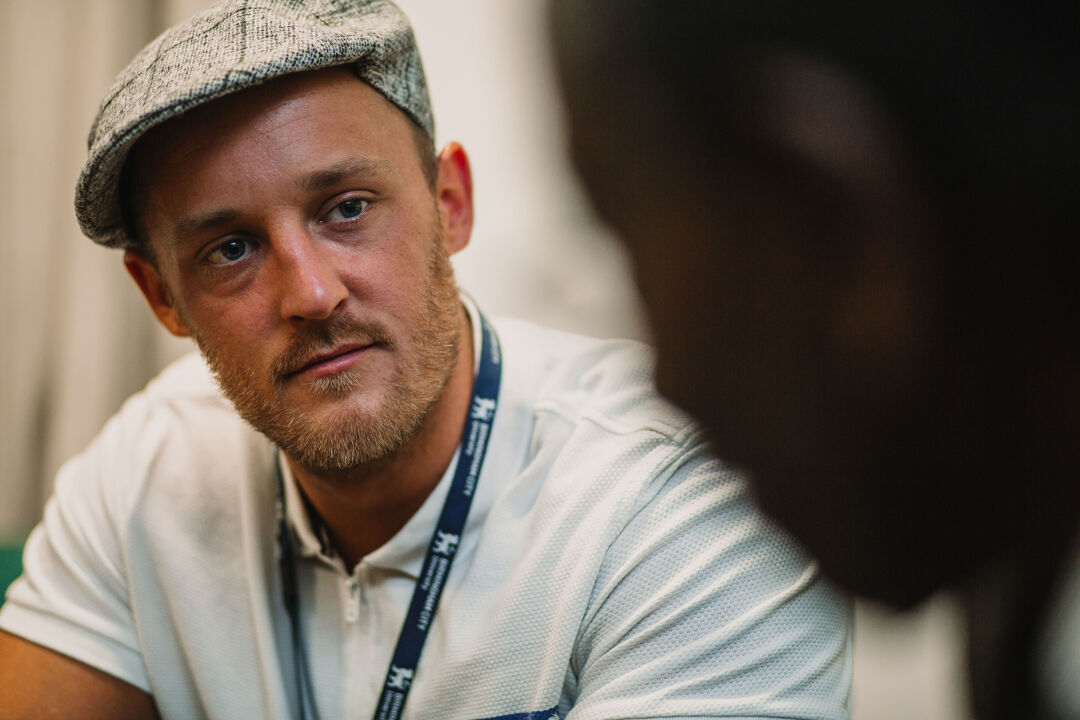
Blog

Professor Elizabeth Yardley, Professor of Criminology and Director of the Centre for Applied Criminology, explores what the Stephen Port case tells us about gender, sexuality and hierarchies of victimisation in the Twenty-First Century.
In November 2016, 41-year-old Stephen Port was convicted of the murders of Anthony Walgate, Gabriel Kovari, Daniel Whitworth and Jack Taylor. He is one of only 50 people in England and Wales to receive a whole life sentence, meaning that he will never be released from custody and will die in prison.
Port was named ‘The Grindr Killer’ by the tabloid press because he accessed many of his victims through the Grindr dating app. Much of the media coverage of the story and the subsequent popular interest in the case focused upon this new way that killers and sexual predators could access their victims.
Indeed, I have researched the use of social media by killers for several years now, exploring how homicide perpetrators use Facebook[i] and exploring the meaning of homicide confessions posted on social networking sites[ii]. However, focusing upon these elements can sometimes distract us from some of the bigger and more pressing issues – issues that are not new and are intricately woven into our social fabric. Exploring contemporary attitudes to gender and sexuality and confronting the stubborn persistence of homophobia in our culture are all crucial to understanding what enabled Port to cause as much harm as he did.
Having met his victims on Grindr or dating sites, Port drugged and sexually assaulted them. He used a substance called GHB (gamma-hydroxybutyrate) or the similar GBL (gamma-butrateactone). Port’s callous disregard for the lives of his victims is shocking. He did not care whether they lived or died.
After killing 23-year-old fashion student Anthony Walgate on 17th June 2014, Port left his body on the path outside his flat, putting a small bottle of GHB in Anthony’s pocket. He lied to the police and said Anthony had taken the GHB himself and he’d moved his body outside because he was scared they would think he had killed him. Port received a short prison sentence for perverting the course of justice.
Just over two months later, Gabriel Kovari – who worked in a London shop – was murdered by Port. Kovari was Port’s flatmate of only two days. On 25th August, Port administered a fatal dose of GHB and assaulted Gabriel. Port told friends that Gabriel had just walked out one day and he didn’t know where he had gone. On 28th August, Gabriel’s body was found propped up against a wall of the churchyard in the ruins of Barking Abbey, close to Port’s home. Gabriel had a bottle of GHB in his pocket. His phone was missing. A dog walker discovered his body.
A few weeks later, 23-year-old chef Daniel Whitworth was Port’s next victim. Port and Daniel had agreed to meet on 18th September. Having killed Daniel, the following day, Port deleted his account on the dating site and carried his body to the grounds of Barking Abbey, leaving him close to where Gabriel had been left. Daniel was found by the same dog walker who discovered Gabriel. Again, a bottle of GHB was found in Daniel’s pocket and his phone was nowhere to be seen. With Daniel’s body was a note that stated he had taken his own life because he felt guilty for killing Gabriel Kovari. Port was trying to blame an earlier murder on his latest victim.
At the time, local media reported that police were not looking for suspects in the deaths of Gabriel and Daniel, describing their deaths as unusual and confusing but not suspicious. Nor were they linking Anthony’s death to them.
Just under a year later, 25-year-old forklift truck driver Jack Taylor would become Port’s fourth and final murder victim. Port killed Jack after meeting him on 13th September 2015. The following day, Port deleted his account and took Jack’s body over to the same churchyard where he had left Gabriel and Daniel. In Jack’s pocket Port left a bottle of GHB, a tourniquet and some medical wipes.
It was not until October that the Metropolitan Police’s homicide and major crime command took over the case and arrested Port in relation to all four deaths. The Met also referred the case to the Independent Police Complaints Commission (now the Independent Office for Police Conduct) because of what they termed ‘potential vulnerabilities’ in how police responded to the four deaths. This investigation is still ongoing.
How did Port get away with murder for as long as he did? I would argue that this had very little to do with his ability to avoid getting caught – indeed he came onto the criminal justice system’s radar very soon after killing Anthony Walgate. What went wrong here was that the net which should have caught him was full of holes. He was able to slither out and kill again, time after time.
Port could have been stopped earlier in his killing cycle and unfortunately, this has a ring of the familiar about it. Dennis Nilsen, convicted of killing six men between 1978 and 1983 but suspected of killing at least twelve, also came within the police’s grasp. Douglas Stewart walked away with his life after an encounter with Nilsen in 1980. Nilsen had tried to strangle Douglas, who went to the police, showing them the red marks on his neck. Nilsen knew exactly what to say when challenged by officers, denying Douglas’s claims and saying the two had had a ‘lover’s tiff’.
At the mention of homosexuality, the police lost interest. Nilsen would go on to murder several other young men. A similar but fatal incident occurred in the USA when one of serial killer Jeffrey Dahmer’s victims escaped – only to be returned to Dahmer’s apartment. By the police. The following is a transcript excerpt from Milwaukee Police Communications[iii]:
Police Officer: Intoxicated Asian naked male. (Laughter) Was returned to his sober boyfriend. (More laughter)
Dispatcher: 10-4 64 and 65.
Police Officer: 10-4. It will be a minute. My partner is going to get deloused at the station. (Laughter).
Port is one of several serial killers to have targeted gay men. Dennis Nilsen. Peter Moore. Colin Ireland. Jeffrey Dahmer. The killer of several men in Toronto’s Gay Village[iv].
These killers all benefited from the fact that their victims belonged to a stigmatised social group. This stigma permeated – and continues to flow through - a range of social institutions not limited to the criminal justice system. These victims belonged to a social group who didn’t matter as much as others. There was less sympathy for them. They were less worthy, less deserving of a thorough and rigorous investigation.
The gay men targeted by serial killers are often additionally vulnerable because they have left home, are in need of a roof over their heads and have lost contact with their families and friends. Many of Dennis Nilsen’s victims fitted this profile and several remain unidentified to this day. They were once someone’s son, someone’s friend. Port’s victims were different, they had not runaway, they had jobs, families and friends. People noticed their absence and reported them missing. The gay rights activist Peter Tatchell has drawn attention to the importance of social class as well as sexuality in this case.
If four young middle-class men had been murdered in Chelsea, police would have probably made a public appeal much sooner and mounted a far more comprehensive investigation. In contrast, the murder of low-income gay men in working-class Barking was treated very differently. Whether conscious or unconscious, police officers stand accused of class and sexuality bias[v].
Criminologists have a concept for this – it’s called hierarchies of victimisation[vi] – where people are not treated equally when they become the victims of crime based on assumptions made about them because of their socio-demographic characteristics like gender, sexuality, social class, age and ethnicity.
Unfortunately, in the cases noted above, the criminal justice system provides us with several examples of homophobia at its worst. It’s a sad fact that over 50 years after homosexuality was decriminalised in England and Wales that we are still seeing gay men let down by the very institutions that should be there to protect us all. They are still not receiving the justice they deserve. And that is just not good enough.
[i] Yardley, E. and Wilson, D. (2015). Making Sense of ‘Facebook Murder'? Social Networking Sites and Contemporary Homicide. The Howard Journal of Criminal Justice, 54(2), 109-134.
[ii] Yardley, E. (2017). Social Media Homicide Confessions: Stories of killers and their victims. Bristol: Policy Press.
[iii] Milwaukee Police Communications transcript, 2.00AM., May 27, 1991. Cited in Egger, S. A. (1998). The Killers Among Us: An examination of serial murder and its investigation. Upper Saddle River, NJ: Prentice Hall, pp 256-7.
[iv] Bruce McArthur has been charged with many of these homicides.
[v] https://www.theguardian.com/commentisfree/2016/nov/24/stephen-port-murder-inquiry-homophobia
[vi] Greer C (2007) News media, victims and crime. In: Davies P, Francis P and Greer C (eds) Victims, Crime and Society. London: Sage, pp. 20-49.




